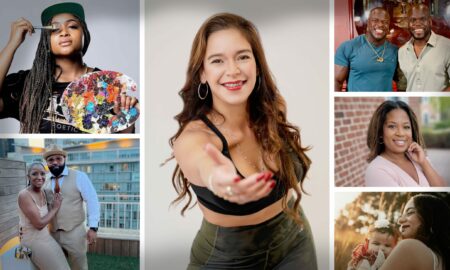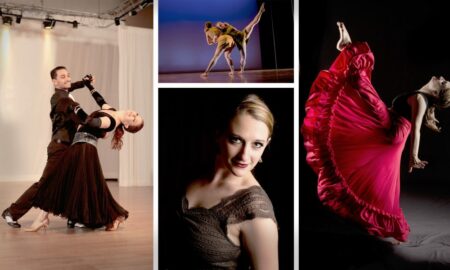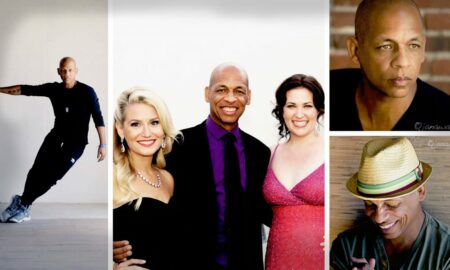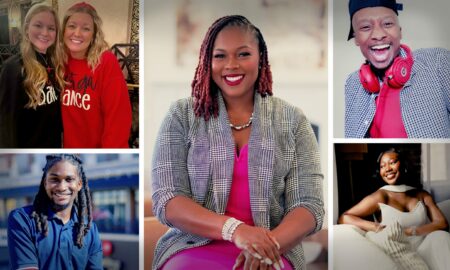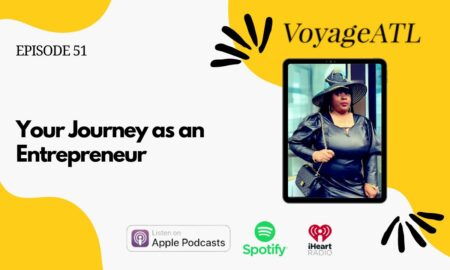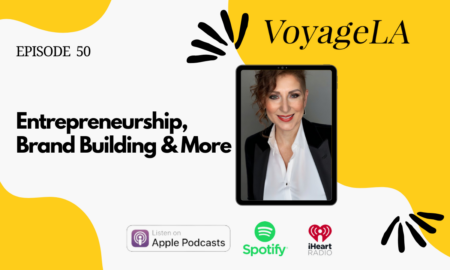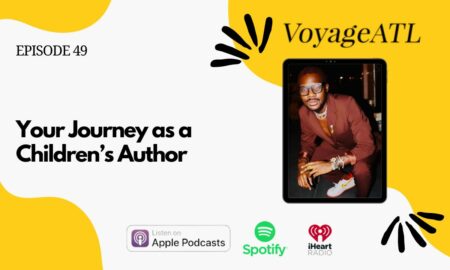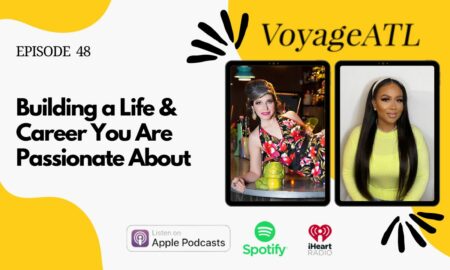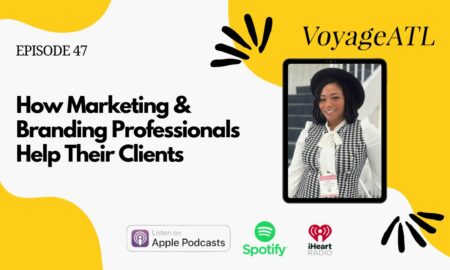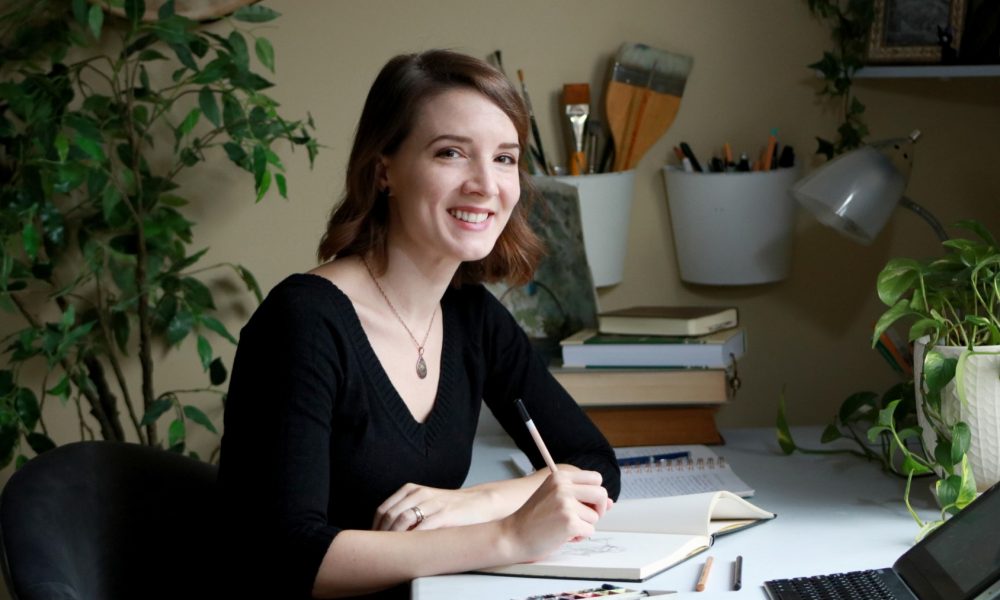

Today we’d like to introduce you to Vivian de Los Rios.
Vivian, before we jump into specific questions about your art, why don’t you give us some details about you and your story.
There’s a saying that creativity flourishes when resources are scarce. The smaller the box you’re in, the bigger you dream. My childish head was full of castles and dragons and adventure; outside my window were swamps and raccoons and a small society from which I felt progressively estranged. (Not that I minded the raccoons. We actually kept one like a cat for a while. It was the rabid bat that nearly did me in.*)
A combination of copious amounts of playing in the woods alone and reading too many books ruined my mind for normalcy, despite how hard I tried to hide it. Like my siblings, I was drawing and writing stories and making things from nothing, activities which are praised in children but, somehow, become taboo as we get older. I hid away my drawings and stories, continuing in romantic (and melodramatic) secrecy, suffering in the purgatory that is middle school, awaiting my chance of escape.
Adventurous escape called so strongly in my teens that I convinced my parents to let me use my small amount of college savings to go study abroad (using the term “study” loosely here; “frolic” might be a more accurate description). I went to Ireland, the land of castles and dragons and adventure, trading my swamp for a glen, trading my small, rural Mississippi high school for a small, rural Irish one.
It was there in Monaghan, finally, that my deep, dark secret was discovered. The art teacher, Mr. McGillion, saw me sketching in my notebook and invited me to join his class. I’d never taken an art class before. After one session, I (unofficially) dropped two other classes and spent every spare second in his classroom. I won a regional art competition that same semester. It meant a great deal to me that others were now celebrating what I thought was a flaw in me. What meant a great deal more was the day Mr. McGillion watched me painting after class and said, quite simply, “You’re an artist.”
I had never allowed myself that thought before. I’d spent years trying to pretend to be normal, which led to the black hole of perfectionism. As any artist can tell you, perfectionism is the enemy of creativity. It was the perfect storm and likely one of the biggest contributors to a nearly lifelong struggle with depression. (Spoiler alert: it gets better.)
Despite protests from older, wiser people, I studied art and English in college. I learned how to draw and paint and write, but not how to make money doing said things. Fortunately, my adventurous side had led me to also study Japanese, which led me to move to Japan and teach English there for a while. I saved up, ready to give art another go, and returned to the US to attend the Savannah College of Art and Design in Atlanta.
SCAD was my dream school. I never thought I’d be able to afford it. I was offered some scholarships, and my parents (whose years of hard work was finally paying off for them) offered to help, and I got a job to help with the rest while I was there. But the ugly shadow of depression still sat heavily on me, tainting my energy and motivation, and making relationships difficult.
The perfectionist in me strove to create works that would please my professors. I made great grades, won some minor awards, and built up a portfolio of work that I did not love. In the midst of it all, I lost my voice. Illustration is all about using your own artistic voice to represent your client’s ideas. I was trying to imitate the voice of the clients themselves. This can work to a degree, professionally, but once my voice was gone, I lost my passion.
At rock bottom, I came to hate drawing. I wanted to shout at the blank canvas on my desk, “What do you want from me?” On those days, I found solace only in the written word. I wrote stories from my childhood or from my travels, posting them anonymously on a blog. I was amazed that random strangers would read the stories and even write to me about them on occasion. They became a sort of lifeline for me, hanging on by a single, secret thread.
Only months before I was set to graduate, I was in a crisis. I did not like my work, and I didn’t know who I was as an artist. I panicked, looking for a change, and on a whim transferred down to the Savannah campus. I like to think it was the winds of fate that blew me there. I did not find my voice or even any castles, but I did find the most incredible human.
I wasn’t looking for love (crisis, remember?). I told him as such. But this sweet Costa Rican man I met late one night in the illustration studio came into my life anyway, like flicking on a light. He saw through the heavy bitterness in me, right to that little thread I was holding onto. Every day and every conversation with him was like adding an extra string to that thread, building it up.
Alejo and I married the following year. By our wedding day, the thread was a rope; a year later, I became pregnant, and I was slowly climbing that rope; our child was born, a beautiful baby boy and Alejo pulled me along for a while, letting merely on his strength; and now, a year later, our son is walking and I’m a rope-climbing champion.
It took a long time to recognize it but writing those stories shaped and protected my creative voice even when I couldn’t create visual art. Just as I had never allowed the thought of being an artist in my youth, I had also never allowed the thought of being a writer. Life is much too short to allow fear or perfectionism or depression to steal away those things which bring you joy.
Alejo works in Atlanta for the Sketch Effect and loves every minute of it. He also works with me at home with our small studio, Two Rivers Creative. The name derives from his maternal last name, de Los Rios, which I added to my maiden name after marriage. Meaning “of the rivers” in Spanish, we liked the idea of two rivers joining together to become stronger and swifter and deeper. Our artistic styles are quite different, but we complement one another. Sometimes we will give work to the other (“Here, this project suits your style more than mine,”) or we’ll collaborate (“Can you color this while I ink these?”) or we’ll just stand over each other’s shoulders (“Looks great, but maybe you should up the contrast and bump that a little to the left.”).
Creativity is once against flourishing in scarcity, though now it is simply a scarcity of time. Now that I’m chasing a toddler around and trying to run a small business from home, I fight hard for the time to write and paint for myself. I’ve just finished writing my first novel, and I’m now in the lovingly laborious editing process. I have no fewer than three paintings sitting on my desk, each calling for attention. More stories bounce around in my head than ever before. I removed all of the un-loved art from my portfolio site, and have slowly started to fill it with new, soulful work.
It’s like my inner child has awakened from hibernation, reaching her little nose up to sniff the air. My studio is my castle; my son cuddles his plush dragon every night; and each day is an adventure, whether I travel in reality, in stories, or art.
Great, so let’s dig a little deeper into the story – has it been an easy path overall and if not, what were the challenges you’ve had to overcome?
The challenges involved in becoming an artist are never related to actually doing art. Drawing and painting and writing all come naturally to humans, and there are infinite resources out there to learn and improve. The biggest challenges are the mental ones: overcoming my fears, learning that perfectionism does me no favors, and getting that little voice of depression that says “you’re not good enough” or “no one cares” to shut up. It took years to dismantle those obstacles, and even now I must sometimes remind myself that “finished is better than perfect.”
We’d love to hear more about your art.
My husband and I own Two Rivers Creative, an art studio specializing in illustration. We particularly enjoy working in publishing, such as creating artwork for book covers and interior illustrations. We have also created illustrations for magazines, newspapers, and even greeting cards and apparel.
What I love most about our work is that we do as much of it by hand as possible. So much artwork is created digitally now, and I think that we lose something in that medium, especially in the publishing industry. My favorite book covers are all paintings or drawings, and my favorite illustrators worked with paint or ink. Alejo enjoys working on scratchboard, delicately scraping away the ink for his detailed drawings. When so much time and care is given to an artwork, it truly shows in the final piece.
Another thing which makes us unique is that we can work together to create artwork, relying on each other’s unique skills. In Alejo’s “Howl’s Moving Castle” illustrations, for example, he did the drawing and the ink work, and then I colored them. In my book cover for “The Lives of Christopher Chant,” I did the oil painting and Alejo drew the illustrated border.
Do you look back particularly fondly on any memories from childhood?
Our messy craft room was one of my favorite memories of childhood. The back porch, which had been converted into a sunroom, was quickly filled with my mom’s sewing and crafting materials, as she frequently sewed our clothes when we were quite young. She didn’t mind our crafting experiments, despite all the glue and paint and glitter spilled all over the floor. She would even let us use the “dangerous” equipment like hot glue guns or the sewing machine. Other kids were always excited to come to our house because they didn’t get that freedom to create and explore and make messes in their own homes.
Contact Info:
- Website: www.tworiverscreative.com
- Email: info@tworiverscreative.com
- Instagram: @vivianillustrates
- Facebook: /artistvivian
- Other: viviandelosrios.com








Suggest a story: VoyageATL is built on recommendations from the community; it’s how we uncover hidden gems, so if you or someone you know deserves recognition please let us know here.

